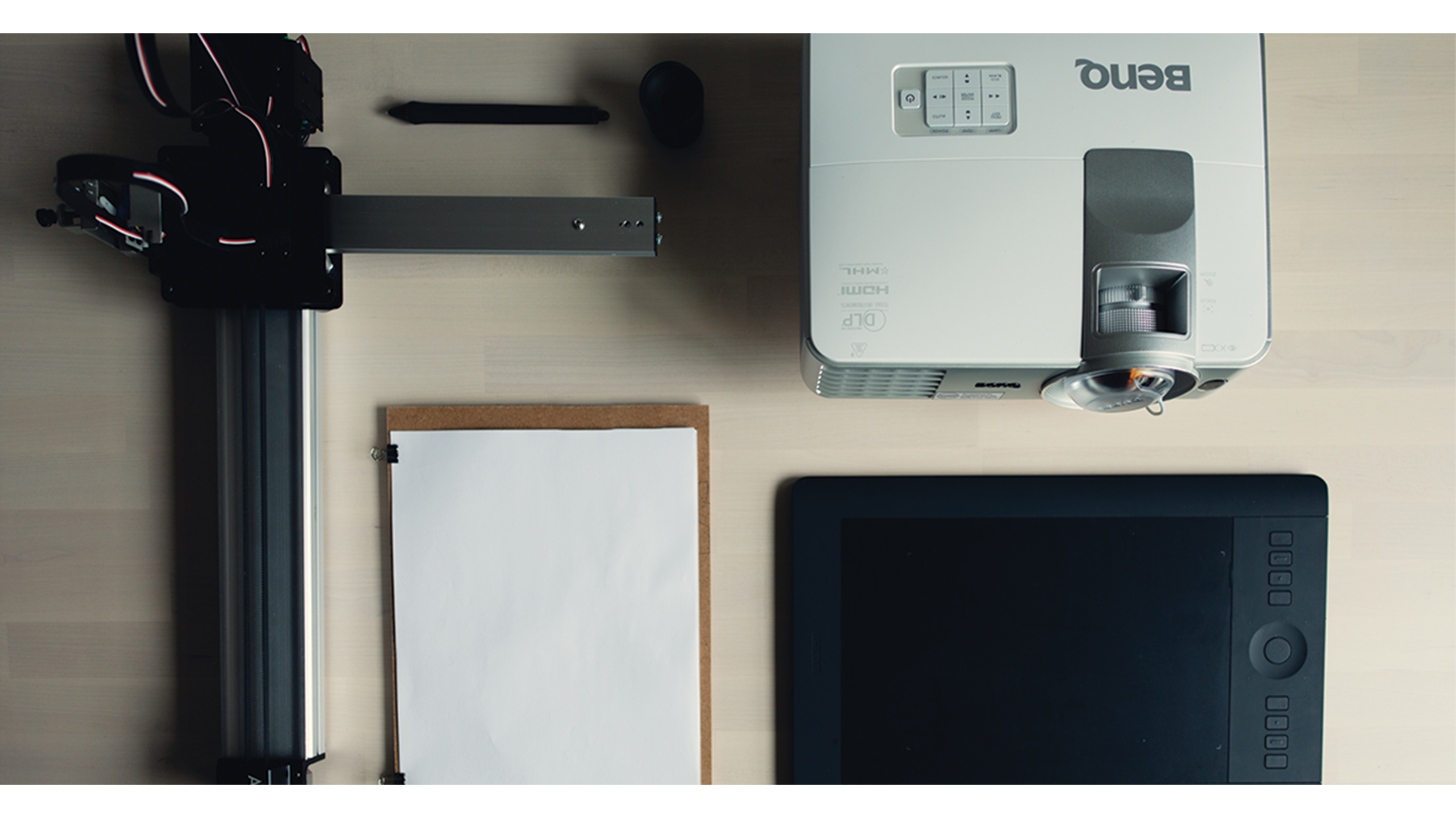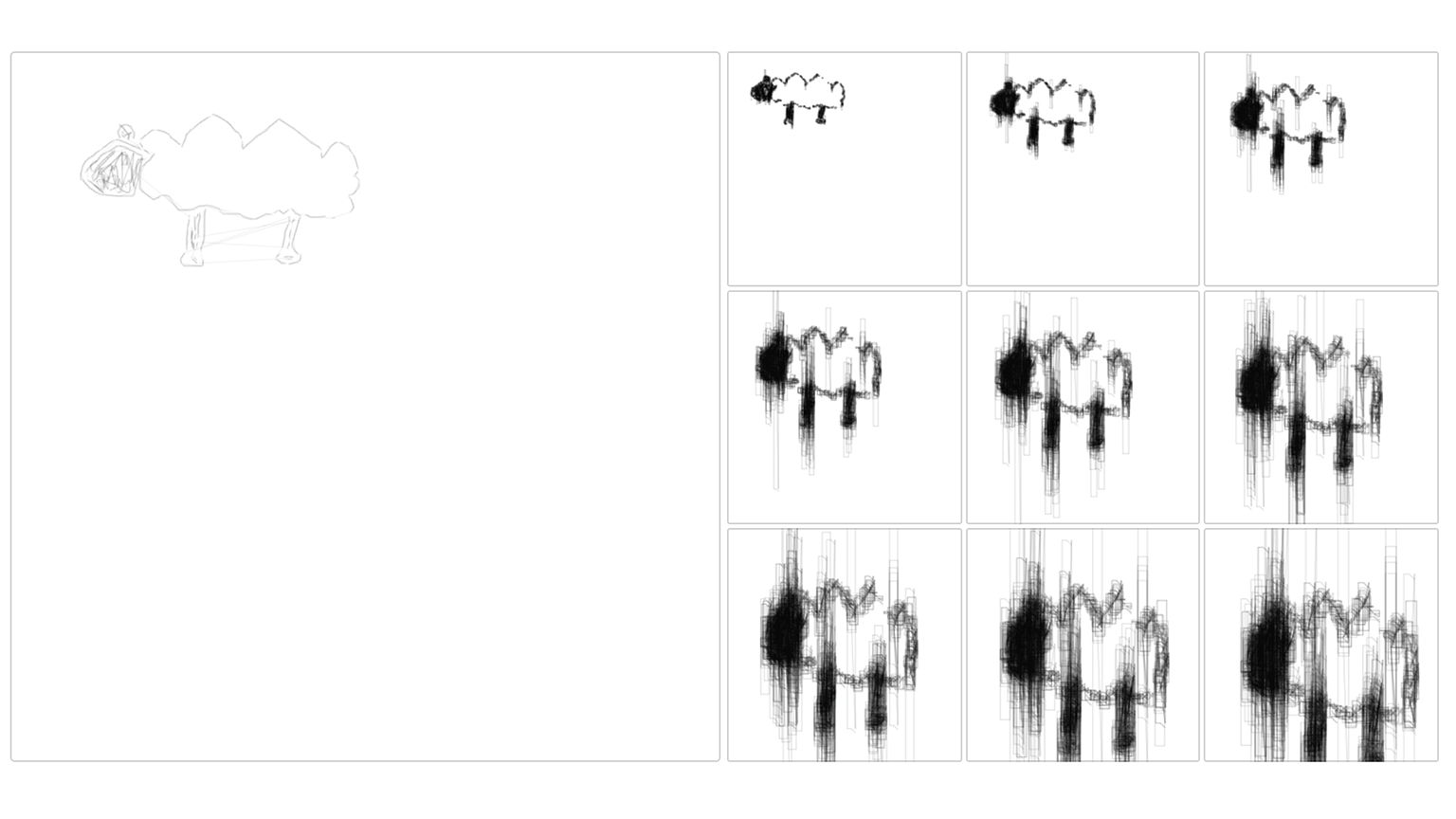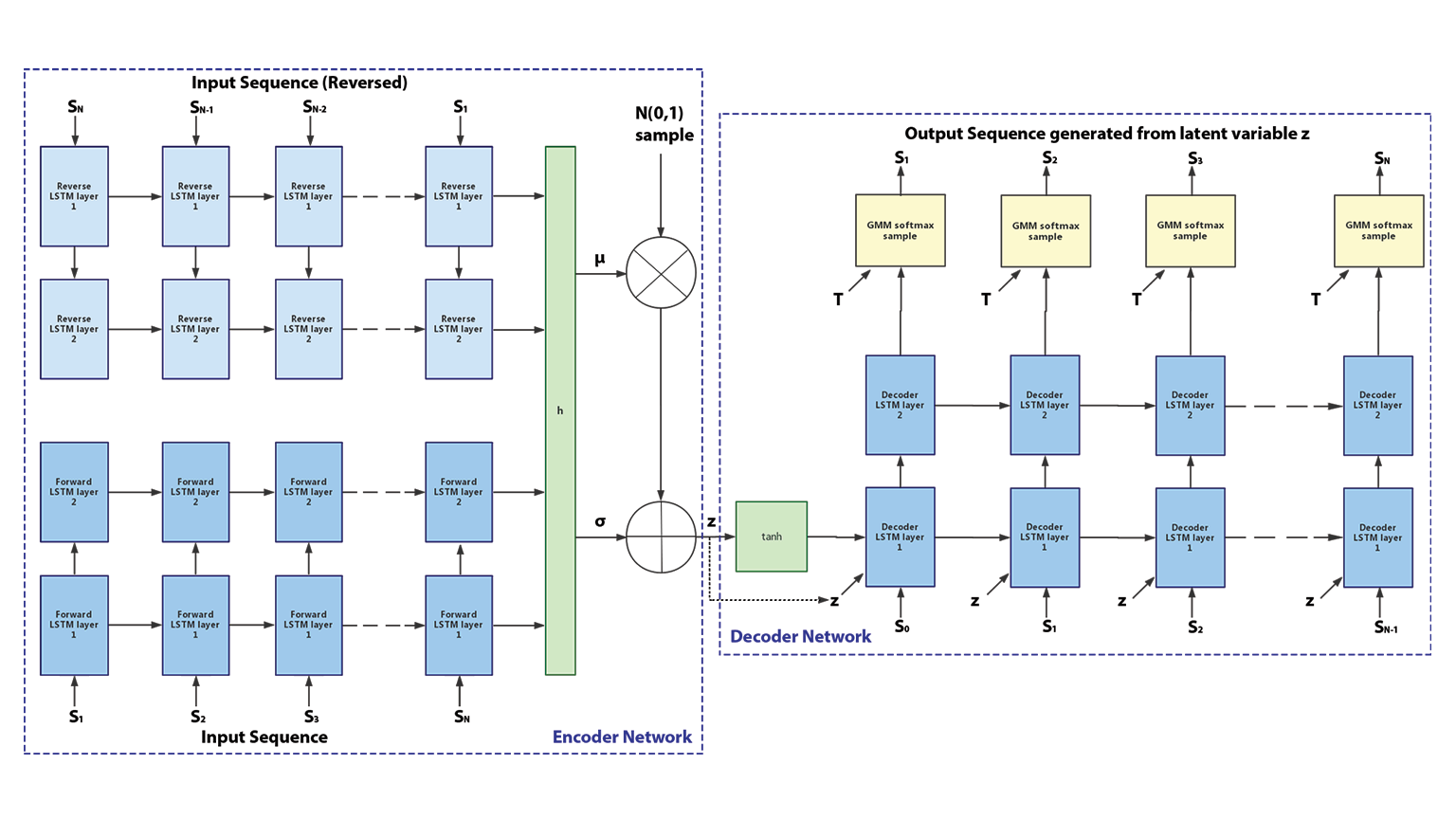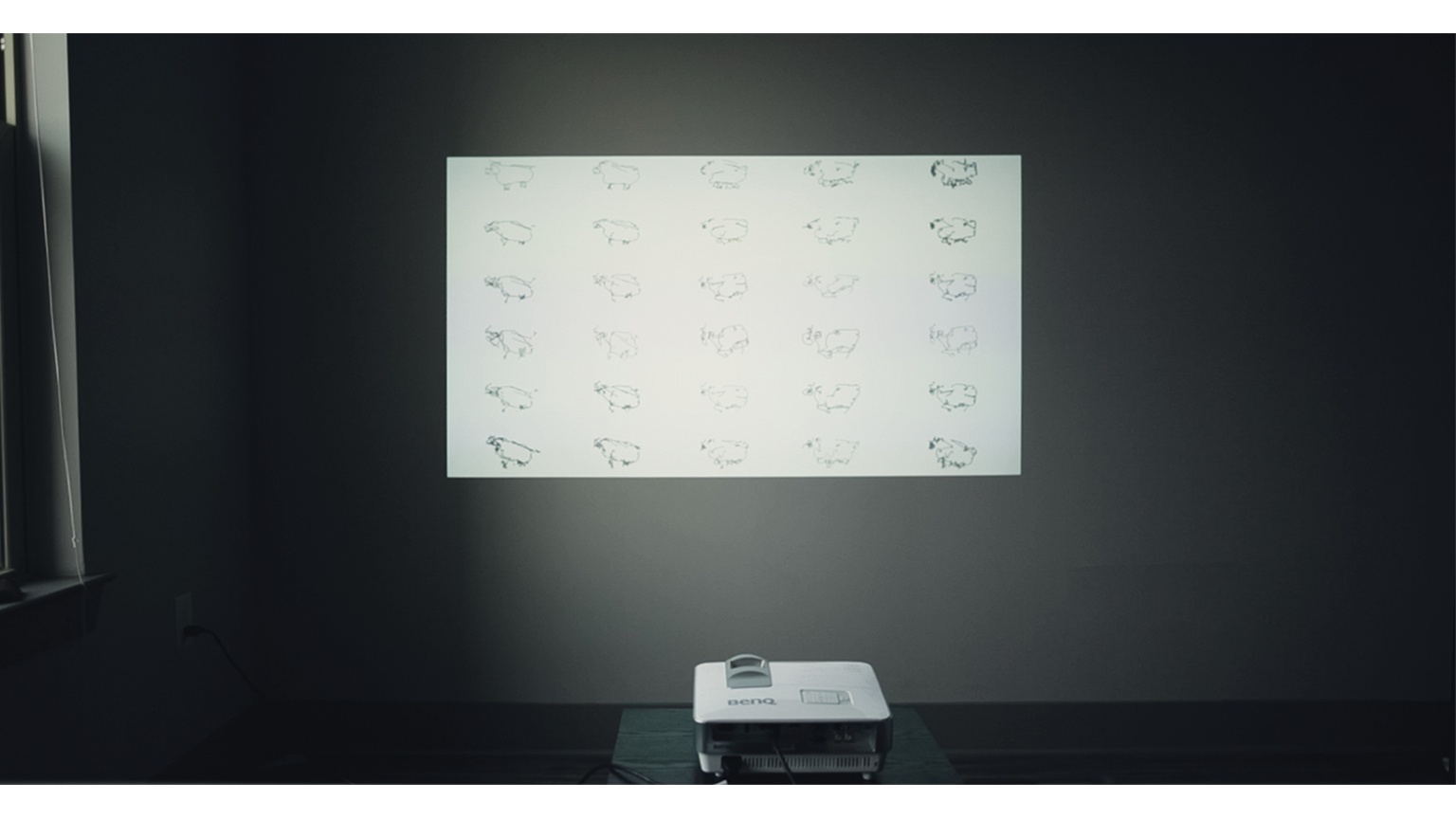
Latent Sheep Dreaming
Machine for Extrapolated Visual Inception
Jiewen Wang, Ollie Hsieh, Jack Gale, Sienna Sun, Sang-won Leigh
Drawing inspiration from Do Androids Dream of Electric Sheep? Latent Sheep Dreaming is an installation exploring tension between human and machine agents in generative processes. Taking place in an empty room, a participant walks up to a stylus console and is instructed to draw sheep. Stylus input is transformed into a matrix of locally and globally affected outputs, increasingly unrecognizable with system influence and connoting of how an artist relinquishes creative ownership to machines. The output is then projected onto a wall and physicalized by a pen plotter.
This project was a joint collaboration between IPDL and Machine Poetics group. It was accepted to DIS 2020 and can be seen here.



